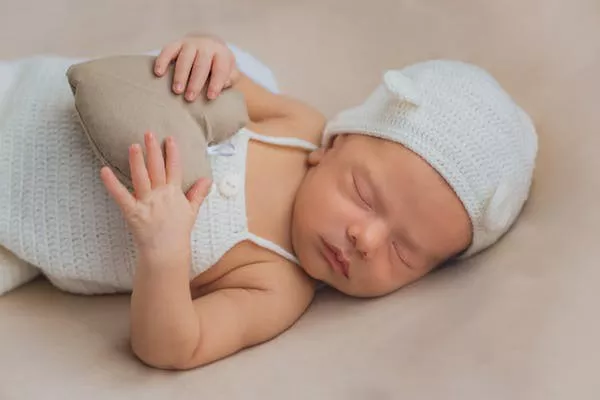Welcoming a newborn into the world is an exciting and joyous occasion. As expectant parents, there are numerous preparations to make, and one essential aspect is ensuring you have an adequate supply of newborn clothes. However, it’s easy to get overwhelmed by the variety and quantity of clothing options available. How many newborn clothes do you really need? In this article, we will guide you through the process of determining the appropriate number of newborn clothes required, taking into account practicality, comfort, and the baby’s growth rate.
-
Size Matters: Understanding Newborn Clothing Sizes
Before delving into the quantity of clothes, it’s crucial to understand the sizing options available. Newborn clothing typically comes in standard sizes, including “Preemie,” “Newborn,” and “0-3 Months.” Preemie sizes are designed for premature babies, while Newborn and 0-3 Months sizes are intended for full-term newborns. Keep in mind that every baby is unique, and the weight and length at birth can vary significantly. Therefore, it’s beneficial to have a few items in each size category to accommodate your baby’s needs.
-
The Essentials: Must-Have Newborn Clothing Items
To build a functional and practical newborn wardrobe, consider including the following essential items:
a. Bodysuits: Bodysuits, also known as onesies, are the foundation of a baby’s wardrobe. Aim for at least seven to ten bodysuits in each size category, as they serve as comfortable daily wear and provide easy access for diaper changes.
b. Sleepsuits/Pajamas: Sleepsuits or pajamas are perfect for nighttime dressing and can double as cozy loungewear during the day. Opt for around five to seven sleepsuits to ensure you have enough for frequent changes.
c. Swaddles and Blankets: Swaddling can provide comfort and security to newborns. Include a few swaddles and blankets to keep your baby warm and snug, especially during the colder months.
d. Socks and Booties: Tiny feet need protection too! Have a collection of socks and booties to keep your baby’s feet warm and protected from the elements.
e. Hats and Mittens: Babies can lose body heat through their heads, so having a few soft hats is essential. Mittens can prevent accidental scratching and keep your baby’s hands cozy.
f. Outerwear: Depending on the climate, you may need a few additional items like sweaters, jackets, or coats for outings during colder seasons.
-
The Daily Rotation: Clothing Quantities for Newborns
To estimate the appropriate quantity of newborn clothes, consider the following factors:
a. Frequency of Laundry: Newborns tend to go through several outfit changes each day due to spit-ups, diaper blowouts, and other mishaps. If you prefer doing laundry daily, a smaller number of clothing items may be sufficient. However, if you plan to do laundry less frequently, having a larger wardrobe is advisable.
b. Seasonal Considerations: The weather and climate in your area will influence the number of clothes your newborn requires. In warmer climates, babies may wear lighter garments and go through fewer clothing changes. Conversely, in colder climates, layering and frequent clothing changes are necessary.
c. Baby’s Needs: Some babies may have more frequent spit-ups or diaper leaks, requiring additional changes of clothes. Additionally, babies with sensitive skin may require frequent changes to prevent irritations.
As a general guideline, aim for the following quantities:
- Bodysuits: 7-10
- Sleepsuits/Pajamas: 5-7
- Swaddles and Blankets: 3-5
- Socks and Booties: 6-8 pairs
- Hats and Mittens: 2-3 each
- Outerwear: 1-2 (depending on the climate)
-
Remember the Growth Spurts: Sizing Up
Babies grow rapidly during their first year, and it’s important to anticipate growth spurts when planning their wardrobe. Newborn sizes may only fit for a short period, so having a few larger sizes on hand can be beneficial. It’s common for babies to outgrow newborn sizes within the first few weeks, so having a selection of 0-3 Months and 3-6 Months sizes ensures they have clothing that fits comfortably as they grow.
-
Secondhand and Borrowed Clothes: A Budget-Friendly Option
Newborn clothes are often worn for a brief period due to the rapid growth of babies. Consider exploring secondhand options, borrowing from friends or family, or participating in clothing swaps with other parents. This can help you save money while still providing your baby with a variety of clothing options.
Conclusion
When it comes to newborn clothing, striking a balance between practicality, comfort, and quantity is key. By considering factors such as size, essential items, daily rotation, growth spurts, and budget-friendly options, you can build a functional newborn wardrobe. Remember, every baby is unique, so adapt your clothing needs to your specific circumstances. With the right amount of newborn clothes, you’ll be well-prepared to welcome your little one into a world of comfort and style.


